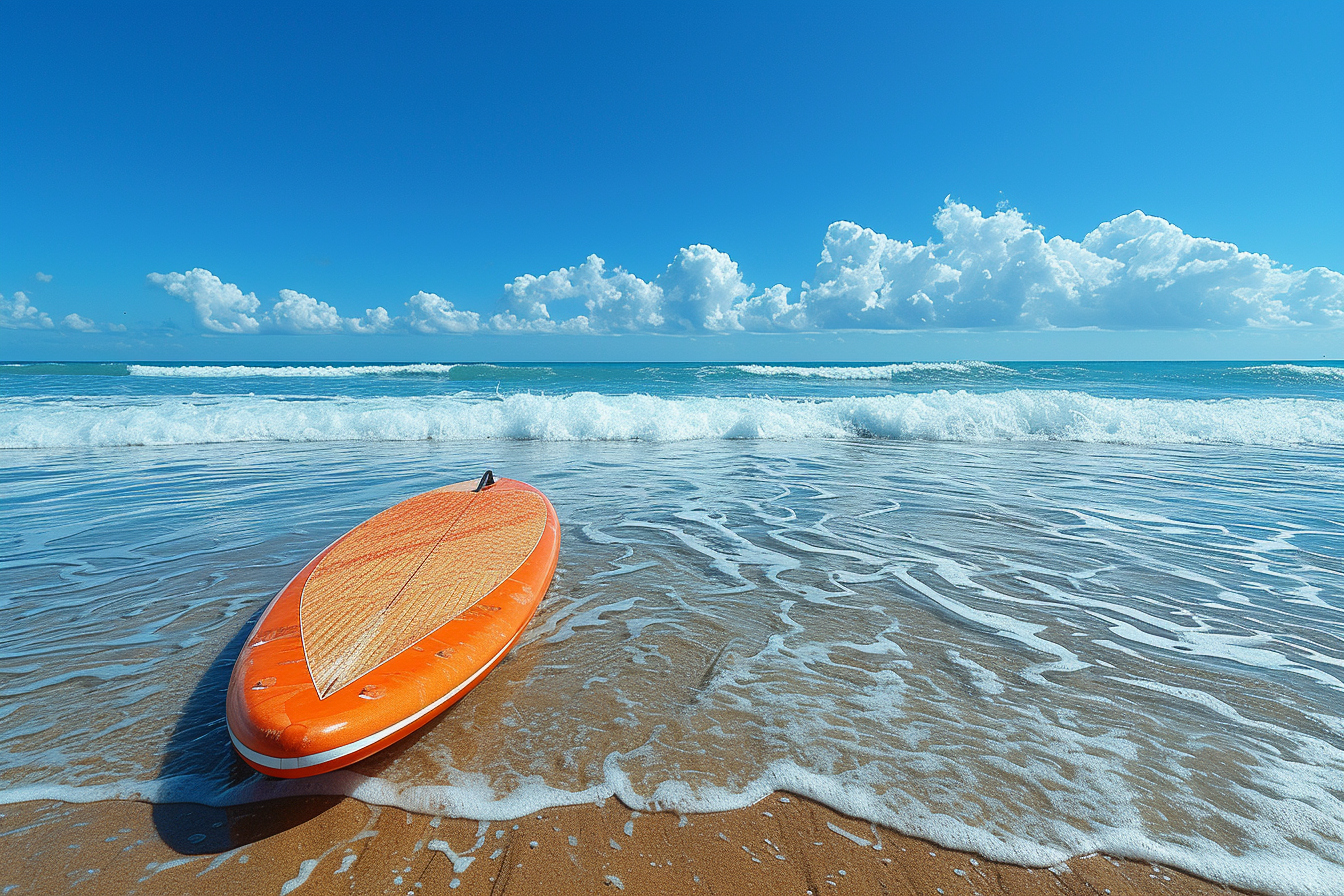Windsurfing, an exhilarating blend of surfing and sailing, captivates adventure enthusiasts seeking the thrill of gliding across the water powered by the wind. At the heart of this sport lies the windsurfing board, a crucial factor in determining your performance and enjoyment out on the waves. Selecting the perfect board requires analysis of several important aspects to ensure a match for your skill level, physical attributes, and windsurfing ambitions. Let’s embark on a deep dive into the key considerations for choosing the ideal windsurfing board.
Understanding board types
Knowing the various types of windsurfing boards is essential as each is designed to cater to different conditions and skill levels. Boards are typically categorized into the following groups:
Freeride boards
Freeride boards are versatile and ideal for intermediate windsurfers. They are designed for comfort, easy planning, and can be used in a variety of conditions. Relatively wide in shape for stability, but still streamlined for speed, these are the boards of choice for those who crave longevity in their sessions without compromising performance.
Wave boards
Tailored for wave sailing, these boards are shorter, have less volume and a more contoured shape. This makes them highly maneuverable and perfect for carving turns on the face of waves. They are best used by more experienced windsurfers who have specific intentions to ride ocean swells.
Racing boards
Crafted for speed demons interested in competitions or simply outrunning their pals, racing boards are long, narrow and have minimum drag. These boards require considerable skill to control, especially in choppy water conditions, and are usually the choice for expert windsurfers.
Beginner boards
A beginner board, often referred to as a "starter" or "school" board, is wide, long, and exceptionally buoyant, providing the much-needed stability that newcomers to the sport require. Equipped with a retractable daggerboard, they facilitate upwind sailing and instill confidence in beginners.
Freestyle boards
These boards are tailored for tricks and aerial maneuvers. Compact and lightweight, freestyle boards favor advanced riders who have a penchant for acrobatics and technical moves.
Volume and buoyancy
When selecting the right windsurfing board, volume and buoyancy play paramount roles. The volume of a board, measured in liters, directly impacts its ability to float. A general rule is to choose a board with a volume in liters that equals your weight in kilograms plus an additional 30 to 40 liters. This ensures the board has enough buoyancy to keep you afloat while you learn to balance and maneuver.
Buoyancy becomes less critical as skill level increases. More experienced windsurfers may opt for a smaller, less buoyant board for greater control and maneuverability. It’s also wise to consider the type of water conditions you will be surfing in, as choppy or rough waters often demand a board with more volume to maintain stability.
Weight and construction
Another deciding factor is the weight of the board, which can significantly affect handling and performance. Lighter boards accelerate quicker and are more responsive, allowing for swift turns and jumps. Materials such as carbon fiber contribute to a lighter construction, but often at a higher cost.
Heavier boards, which are typically more durable and forgiving, are constructed from materials like epoxy or reinforced plastic. Beginners may benefit from the stability and resilience of these boards, while seasoned windsurfers might find them less thrilling to navigate.
Size and width

Closely linked to volume is the size and width of the board. A larger, wider board provides greater stability and is therefore beneficial for beginners or heavyset individuals. As you progress in the sport, you may seek a narrower board that will enable swifter, more intricate maneuvers. Keep in mind that board width influences balance—a wider board is more stable but may sacrifice speed.
Sail size compatibility
Selecting a board in harmonious balance with your sail size is critical. Boards typically list a range of sail sizes they are compatible with—exceeding this range could lead to an unwieldy experience or even damage the board. Larger sails require stronger winds and are suitable for heavier windsurfers or those who demand more power, while smaller sails favor lighter windsurfers or conditions with less wind.
When contemplating sail size, think about the average wind conditions in your area and your personal preference for riding style—whether you value power and speed over finesse and control.
Fin configuration
The fin setup on a windsurfing board dramatically impacts its performance in the water. A single large fin offers straight-line stability and is good for beginners, while multiple fin arrangements, such as the thruster or quad setups found on wave boards, endow the rider with increased agility and a tighter turning radius. Racing and slalom boards often exhibit unique fin designs engineered to cut through the water and maintain speed.
Brand and budget
Reputable brands matter in the windsurfing world—not only for the assurance of quality but also for the post-purchase support and warranty offered. New windsurfers may consider budget-friendly options, perhaps even second-hand boards, while those committed to the sport might view a higher-end board as a worthwhile investment.
Investing in the perfect windsurfing board mandates careful consideration of all these factors. Prioritizing your needs and understanding your development potential in the sport are the first steps toward a decision that promises many hours of joy on the water. Matching the board to your body composition, skill set, and the nature of your aquatic playground ensures an optimal fusion of technology and human potential, setting the stage for windsurfing adventures that uplift the spirit and challenge the body.


Leave a Reply